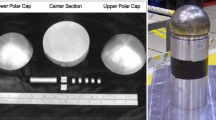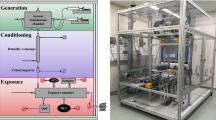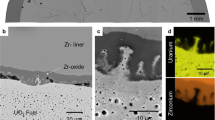Abstract
ON October 16, 1964, at 1500 h the Chinese exploded a nuclear weapon bomb (Hsinhua News Agency, October 17, 1964) at a test site near Lop Nor in Takla Makan in Sing Kiang. On October 27 the first debris appeared in Swedish ground-air samples. Scarcely any detectable fission product activity appeared in high-altitude air samples1. The background, emanating principally from the Russian test series in the autumn 1962, was then already very weak and did not interfere.
This is a preview of subscription content, access via your institution
Access options
Subscribe to this journal
Receive 51 print issues and online access
$199.00 per year
only $3.90 per issue
Buy this article
- Purchase on Springer Link
- Instant access to full article PDF
Prices may be subject to local taxes which are calculated during checkout
Similar content being viewed by others
References
Persson, G., F.O.A. Rep., A, 4424 (1965).
Sisefsky, J., Brit. J. App. Phys., 10, 526 (1959).
Sisefsky, J., F.O.A. 4 Rep., A, 4217 (1961).
Sisefsky, J., F.O.A. Rep., 4 A, 4407 (1964).
Sisefsky, J., Science, 133, 735 (1961).
Sisefsky, J., F.O.A. 4 Rep., A, 4130 (1960).
Mamuro, T., et al., Nature, 196, 529 (1962).
Mamuro, T., et al., Ann. Rep. Rad. Cent. Osaka Prefecture, 5, 1 (1964).
Author information
Authors and Affiliations
Rights and permissions
About this article
Cite this article
SISEFSKY, J. Debris Particles resulting from the Chinese Nuclear Bomb Test. Nature 206, 1140–1141 (1965). https://doi.org/10.1038/2061140a0
Issue Date:
DOI: https://doi.org/10.1038/2061140a0
This article is cited by
-
Observations on Debris from the First Chinese Nuclear Test
Nature (1966)
-
Debris Particles from the Second Chinese Nuclear Bomb Test
Nature (1966)
Comments
By submitting a comment you agree to abide by our Terms and Community Guidelines. If you find something abusive or that does not comply with our terms or guidelines please flag it as inappropriate.



